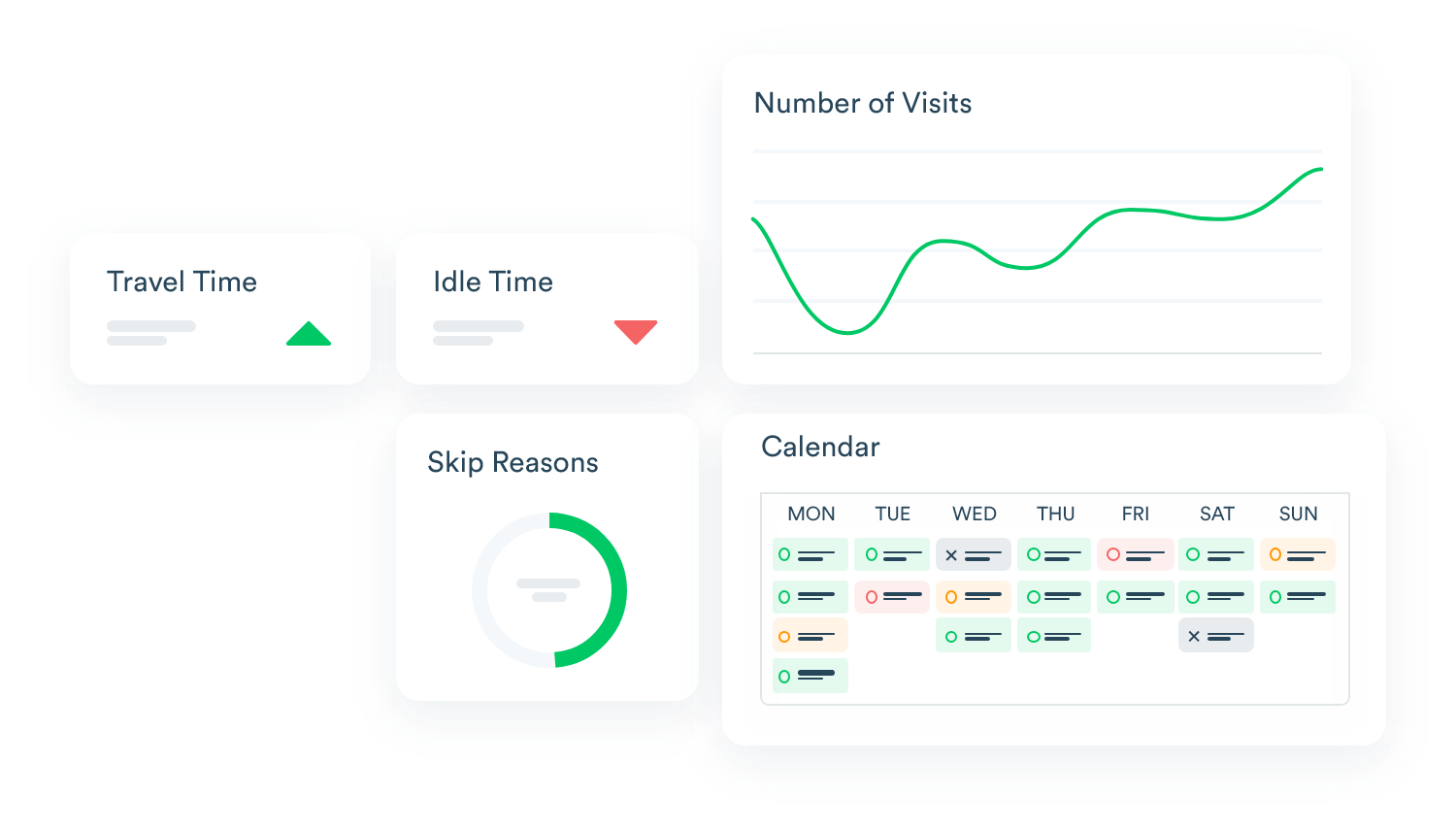The way managers and teams handle their inventory management is crucial for business success. With the rise of technology and changing consumer behaviors, having a finely tuned inventory system can mean the difference between thriving and merely surviving.
As technology continues to advance and competition intensifies, retailers must embrace sophisticated inventory tracking solutions to maintain their edge and meet customer expectations. These solutions not only help in tracking stock levels in real-time but also enable predictive analytics to forecast demand accurately.
This article, like others on our blog, explores proven strategies for optimizing stock management in the retail sector with approaches that both brands and retailers can adopt to streamline their operations, reduce their costs, and ultimately enhance customer satisfaction and loyalty.
Why Inventory Management Matters
The answer is simple: Inventory management, when done correctly, ensures that retailers maintain the right products in the right quantities at the right time. This balance is crucial, as it minimizes the risks associated with both overstocking and understocking, which can significantly harm a business’s profitability.
Overstocking can significantly tie up capital that could be used for other investments, leading to increased storage costs and potential wastage if products become obsolete, expired or damaged. On the flip side, understocking can result in missed sales opportunities when customer demand exceeds available inventory, ultimately leading to dissatisfaction among customers who may turn to competitors to find what they need.
Striking the right balance between inventory levels is crucial for maintaining a healthy cash flow and ensuring customer satisfaction. Effective inventory management strategies can help mitigate these risks, optimizing stock levels to meet demand without incurring unnecessary costs.
The Cost of Poor Inventory Management
The cost of poor inventory management can negatively impact a business and its bottom line.
For instance, stockouts can lead to lost sales opportunities, as customers may turn to competitors for their needs, resulting in not only immediate revenue loss but also potential long-term customer attrition. Conversely, overstocking products that don’t sell can create a different set of challenges, including costly write-offs and wasted resources, as unsold items may have to be discounted or disposed of.
When it comes to excess inventory, the costs come under the form of additional storage space, which can considerably increase operational costs, including rent, utilities, and labor for managing that inventory. This excess can also tie up valuable capital that could be better utilized elsewhere in the business. Furthermore, inadequate inventory management often leads to inefficiencies across various operational processes, including order processing, fulfillment, and delivery.
These inefficiencies can create bottlenecks, slow down response times, and diminish customer satisfaction. Ultimately, the cumulative effect of these issues can have a detrimental impact on a company’s overall performance and profitability, making effective inventory management a crucial component of business success.
Key Strategies for Inventory Optimization
To tackle these challenges, here are some key strategies for effective retail stock management:
- Implement Advanced Inventory Tracking Solutions
Modern inventory tracking solutions leverage technology to provide real-time visibility into stock levels, sales trends, and supply chain logistics. No wonder that around 73% of warehouses have plans to implement mobile inventory management solutions. These systems can integrate with point-of-sale (POS) systems, e-commerce platforms, and warehouse management systems (WMS) for seamless data flow and optimized inventory management.
The benefits of such systems include real-time inventory tracking, which helps maintain accurate stock levels for optimal availability, enhanced accuracy in stock counts to reduce discrepancies, automated replenishment alerts that ensure timely restocking, and seamless integration with other business systems for improved efficiency.
- Adopt Just-In-Time (JIT) Inventory Management
Just-In-Time (JIT) inventory management is an effective strategy that focuses on replenishing stock only when necessary, thereby significantly reducing carrying costs and minimizing the risk of overstocking. This approach not only helps businesses maintain lean inventory levels but also enhances overall operational efficiency. The benefits of JIT include lower storage costs, as businesses do not need to allocate resources for excess inventory, a decreased risk of obsolescence, which is crucial in fast-paced markets where products can quickly become outdated, improved cash flow due to reduced capital tied up in unsold goods, and greater flexibility to adapt to market changes, allowing companies to respond swiftly to customer demand and shifting market trends. By implementing JIT, businesses can optimize their supply chain management and ensure they remain competitive in an ever-evolving landscape.
- Utilize Data Analytics for Inventory Forecasting
Data analytics and market intelligence can significantly transform how retailers manage their inventory by meticulously analyzing historical sales data, market trends, and customer demand patterns. This thorough analysis enables businesses to make informed decisions regarding optimal stock levels and efficient replenishment schedules. By leveraging advanced data analytics tools, retailers can gain deeper insights into purchasing behaviors, seasonal fluctuations, and emerging trends that may impact their inventory management needs.
This data-driven approach offers several key benefits, including improved demand forecasting, which allows retailers to anticipate customer needs more accurately and align their inventory accordingly. Furthermore, it helps reduce stockouts, ensuring that popular items are always available, while also mitigating overstock situations that can lead to markdowns and wasted resources. Enhanced decision-making processes result from data analytics, empowering retailers to respond swiftly to market changes and customer preferences. Ultimately, this leads to increased customer satisfaction, as shoppers find the products they want in stock and experience a seamless shopping experience.
- Implement a Vendor-Managed Inventory (VMI) System
Vendor-Managed Inventory (VMI) is a strategic approach in which suppliers take responsibility for managing the retailer’s inventory levels based on mutually agreed-upon metrics, such as sales data and stock turnover rates. This proactive collaboration can significantly streamline the supply chain process and enhance stock availability, ensuring that products are readily accessible to customers when they need them.
By allowing suppliers to monitor and replenish inventory, VMI reduces the risk of stockouts and overstock situations, ultimately leading to increased customer satisfaction. Additionally, this collaborative approach offers several benefits for retailers, including a reduced administrative burden as they can rely on suppliers to manage inventory levels rather than spending time on manual tracking and ordering.
Moreover, VMI fosters stronger relationships between suppliers and retailers, as both parties work closely together toward common goals. This partnership helps to optimize inventory levels, leading to better forecasting and demand planning. In turn, enhanced supply chain efficiency can result in lower operational costs and improved profitability for both suppliers and retailers, making VMI a valuable strategy in today’s competitive marketplace.
- Optimize Your Supply Chain
An efficient supply chain is crucial for effective inventory management, as retailers must collaborate closely with suppliers to ensure timely deliveries and minimize lead times. This collaboration is vital, as any delays in the supply chain can lead to stockouts, which ultimately impacts customer satisfaction and sales. Implementing supply chain management software can significantly enhance the monitoring and optimization of the entire process, providing real-time visibility into inventory levels and supplier performance. By automating key processes such as order tracking and demand forecasting, retailers can make more informed decisions and respond quickly to market changes. This leads to several benefits, including shortened lead times, reduced stockouts, lower transportation costs, and improved supplier performance. In addition, a well-managed supply chain fosters stronger relationships with suppliers, enabling retailers to negotiate better terms and improve the overall efficiency of their operations.
- Regularly Audit and Review Inventory
Regular audits and reviews of inventory levels are crucial for identifying discrepancies and areas for improvement. By systematically assessing inventory, businesses can ensure that what they have on hand aligns with what is recorded in their systems. Practices such as cycle counting—where a small subset of inventory is counted on a rotating schedule, spot checks that involve unannounced counts of certain items, and annual physical inventory counts, which provide a comprehensive review of all inventory, are essential to maintain inventory accuracy. These practices not only lead to increased inventory accuracy but also foster the identification of discrepancies that may otherwise go unnoticed. Furthermore, they enhance accountability among staff, as regular checks encourage a culture of diligence and responsibility. Ultimately, this diligent approach contributes to continuous improvement in inventory processes, resulting in better overall efficiency and effectiveness in managing stock levels.
Conclusion
Effective inventory management is essential for the success of any brand or retail business. By implementing advanced inventory tracking solutions, leveraging data analytics, optimizing the supply chain, and fostering a sense of community among customers, retailers can enhance their operational efficiency and overall customer experience.
By following these strategies and leveraging the latest technology, retailers and brands alike can stay ahead of the competition and ensure their inventory management processes are as efficient and effective as possible.
Ready to elevate your inventory management strategy? Book your demo and our team will be happy to walk you through a solution that will revolutionize your retail operations.



